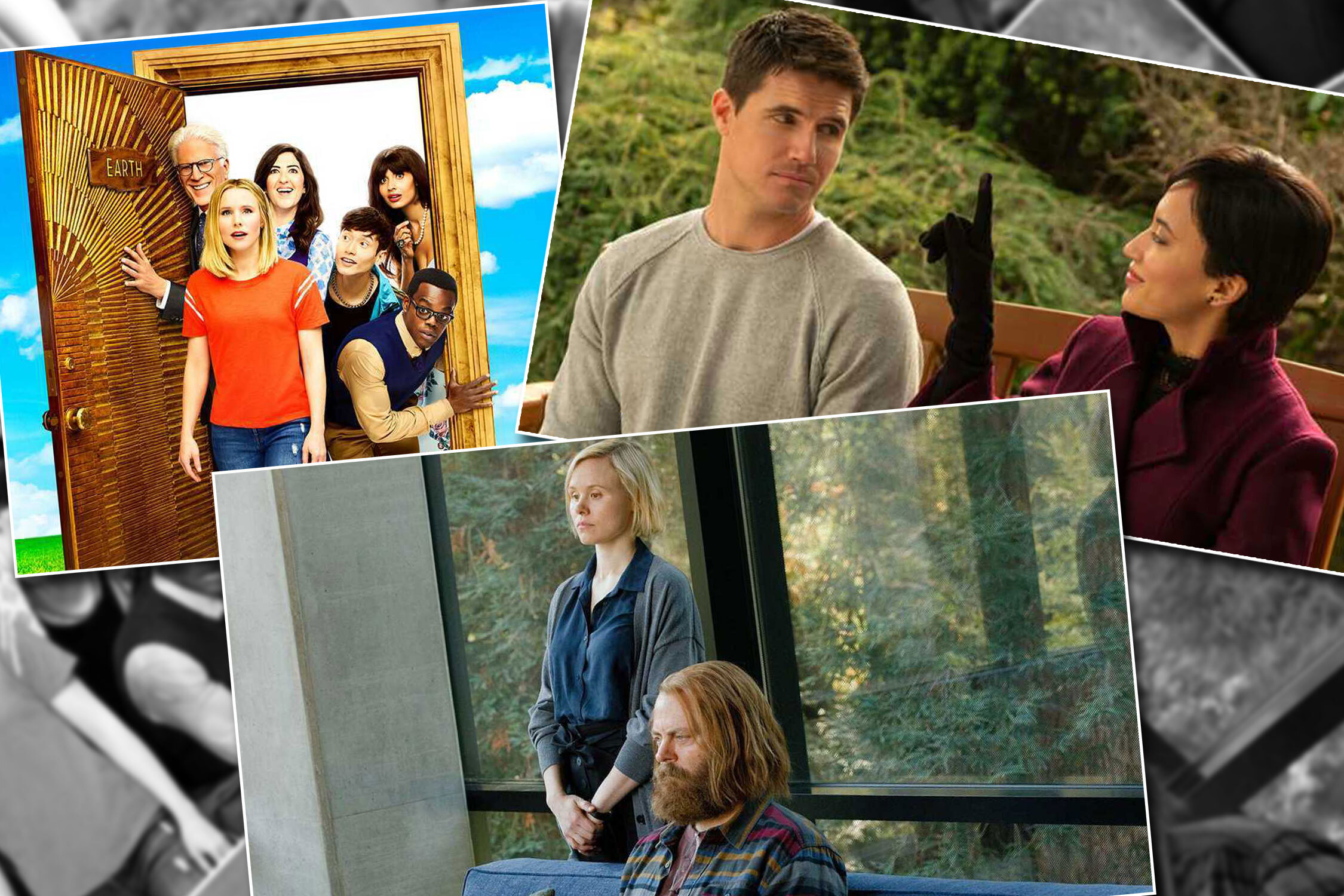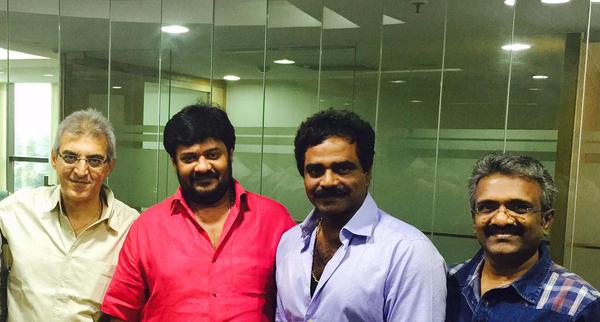20 years and 50 movies into his career, Editor Praveen KL has mastered the art of “observing people”. “I love doing that,” he declares, “I have also learned to predict what a person is going to tell me next. It’s something instinctive, I cannot be an editor, otherwise.”
There’s a curious artifact in editor KL Praveen’s office. Shoved in next to the couch, with contrasting chess-board hues, it resembles a giant cube.
The apartment housing Praveen’s office is situated just off the busiest stretch in Saligramam. On a narrow alley named after one of the river-greats. It isn’t hard to find. Huge posters of Kaaviya Thalaivan and Sigaram Thodu, pinned quite symmetrically on the notice board greet me as I arrive; along with a low rumble of chatter from within. I ring the bell, and the babble dies down instantly. One of Praveen’s assistants ushers me in.
The editor is in a meeting, he says. Could I wait for a little while?
I find myself in an ante-chamber of sorts. A desktop is tucked away on one corner, with a bunch of young men gathered around the screen, while a Mac sits serenely on a little coffee table. A collection of awards, medals and mementos (one with Kandasamy in bold, golden font), lines a shelf.
Presently, a distinct ping echoes through the room, and a young man jumps up from his perch in front of the monitor, and pokes his head inside the office. Again, a low rumble of chatter.
Five more minutes, he says, turning to me.
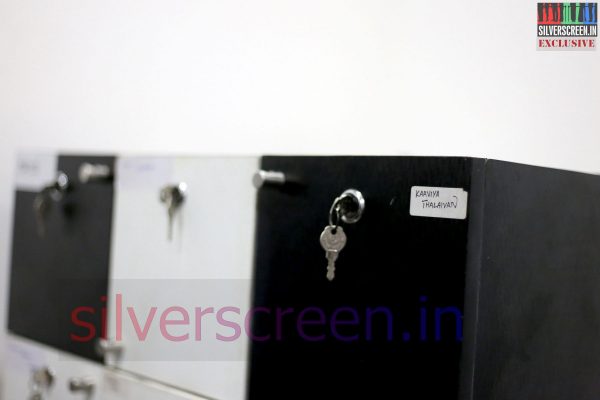
Editor K L Praveen Exclusive Photos for Silverscreen.in
A key glints at each door.
Praveen walks in shortly, carrying a mug of steaming green tea. He’s quite in tune with the décor; sporting a casual black T-shirt, a thin metal bracelet on his wrist. He’s ready to get down to business. “Ah that,” he smiles indulgently, as I point at the cube. “I got it custom-made from a friend of mine. He’s an interior designer. Go on, take a look,” he urges, sipping on his tea. I yank the little door labelled Kaaviya Thalaivan open. An assortment of DVD cases are strewn inside. “Each one is a hard-disk,” he says, and walks over to the side of the cube, with a slightly bigger door. A stash of files here. “That’s where all my scripts go.”
What is this called, I ask him curiously.
He shrugs. “A cube box?”
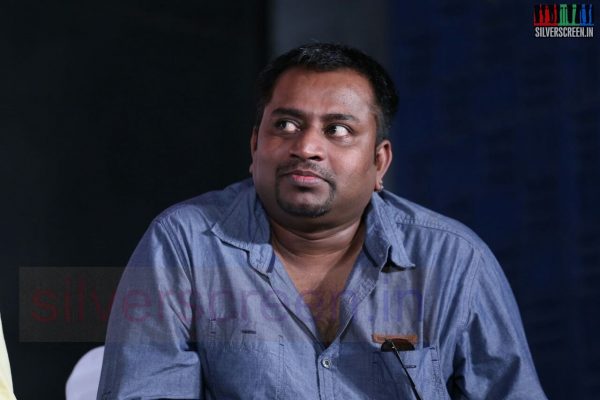
Editor KL Praveen at Sigaram Thodu Press Meet Event Stills
Cinema was a major part of his childhood, thanks to a father, and two uncles who were editors themselves in the Telugu industry. His summers were largely spent in editing studios splicing film tapes for his uncles. Using the very traditional splicer. “That was how it was cut back then. They used to give me ₹15 when I was done with the work.” And that’s precisely why Praveen didn’t want to have to do anything with it.
Cinemave vendaam nu irundhen…
He wanted to enroll himself in a Bio-tech course, but that didn’t happen. “That’s when my father directed me to his dubbing studio. Velila poi oor suthama, I could earn some part-time money.”
Four years later, when he turned 21, Praveen emerged fresh and cocky from his stint at ETV. “I thought I knew everything,” he smiles, “The new editing software, Avid, had just come in then and I used to learn it by night. I also got an opportunity to work with Balu Mahendra.”
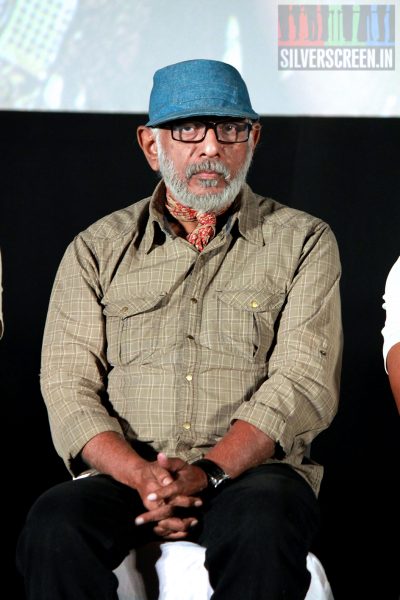
Balu Mahendra
Neraya thittuvaaru, aana nallaa solli kudupaaru.
Along with Praveen, director Vettrimaaran was also learning the ropes under the tutelage of the legendary filmmaker “Vetrimaran and Balu sir used to fight once in two days. Because Vettrimaran was the only person who’d have the courage to tell him he’s wrong. Of course, sir would first ask him to clear out,” grins Praveen, “but two days later, he would call him back and say, ‘yes you were right’.”
Balu Mahendra was also quick to “break his illusion”, adds Praveen. “He said I have to re-learn everything. But the techniques that he taught us, I still use them every day.”
A basic sound-cut is what Praveen uses as an example. “For instance, if I want to make the audience feel emotionally-drained, I’ll use the Diesel Train Horn. It would sub-consciously arouse emotion. Balu sir taught me that.”
There are other minutiae that he remembers as well. “When you want the audience to not notice your cuts, you do it with sound,” Praveen explains, “if you might have noticed, a cut is generally employed when someone closes the door in a movie. We end it with a click. That’s because a sound hides the visual cut. The mind registers what it hears, but not what it sees. I use it a lot to trim my edits. It makes the process easier.”
The years with Balu Mahendra didn’t quite convince him about carving a career in cinema though. He had worked closely with him for over two years by then; on the weekly TV series, Kadhai Neram, churning out 48 episodes. He had watched Balu at close-quarters: the show would go on air every Wednesday, after which the filmmaker would hunt for a new script in the next two days and shoot over the weekend. Many a time, Praveen remembers, Balu Mahendra would sleep on the carpet in the editing studio. That period remains a “huge learning curve” in his career.
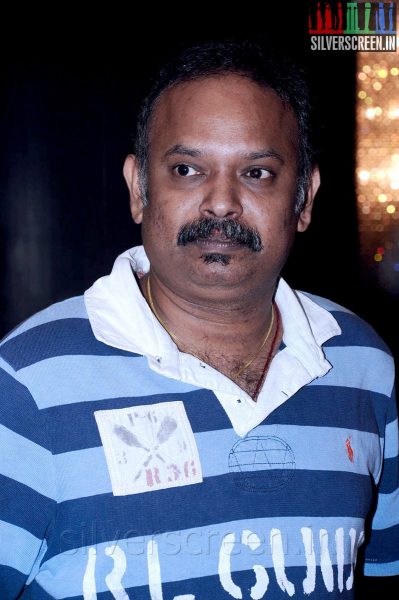
Director Venkat Prabhu at the 2014 Indian Badminton Celebrity League Launch
They bonded over Ilayaraaja songs that evening.
“We used to listen to Raaja’s music till 6 am. SPB Charan was also there, to shoot a TV series and I was the editor for it.” He remembers Venkat Prabhu asking him then,
“Padam panreegala?”
“I said, ‘script anupunga, paapom’,” Praveen laughs, “two months later, I got the script and a flight ticket.”
It was for Chennai 28.
It was like being on a holiday, Praveen reminisces. “I worked on Chennai 28 for three months. Then I went back to Singapore. I was freelancing for many channels then. Life was good, money was good.”
But he got a call from Venkat Prabhu again; this time for Saroja. “When I first heard the movie title, I told Prabhu – peru nalla illaye,” chuckles Praveen, “but his reasoning was that the song Saroja Samannikalo was a huge hit. He wanted to carry that forward. My problem was, the title had no relevance to the story. So then, he changed the name of the girl to Saroja.”
Saroja subsequently received a State Award, and finally Praveen was convinced about his choice of career. “I had lived for 10 years in Singapore, and was looking for something here.”
He’s currently working on Venkat Prabhu’s fourth project, Masss (“a supernatural comedy thriller that kids will enjoy”) among other nine other movies while Srikanth NB, his partner, is working on Sundar C’s Aranmanai.
Praveen has carried his work all over the world. He remembers snipping Aaranya Kaandam and Kunguma Poovum Konjum Puravum and Kandasamy at airport lounges. “Everything is digitized, so it was just a matter of sharing files,” he smiles, “people in the airport used to wonder what I was up to!” He points at a couple of unwrapped packages at the far end of the room. “See those? They are the latest machines for editing. They can process the 4k resolution – it’s what you see in theatres. This technology will come down in another three years. There would be no labs or sound-mixers in the future, it would eventually come down to that. I want to be a little ahead, though,” Praveen declares, “but I haven’t managed to install them yet. It would mean shutting down our entire infra.”
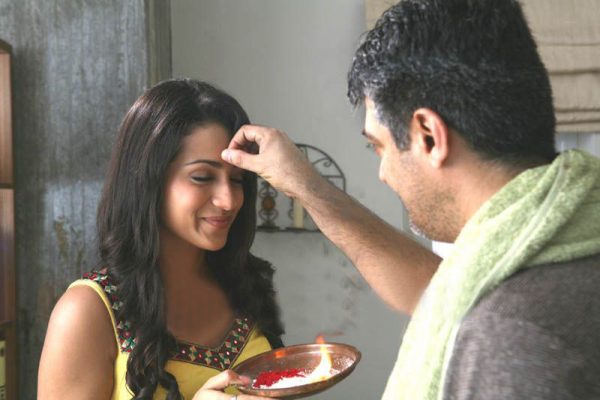
mankatha movie stills – moviegalleri.in
Avar jeep lerndndhu erangarapodhu, slow motion pottu…
These are things that I learnt on the job. For a small hero, a 3-second opening sequence would suffice. For someone like Ajith though, we would have to wait for the audience. They would clap, throw paper, whistle, and cheer. We would have to hold the shot till all that subsides.”
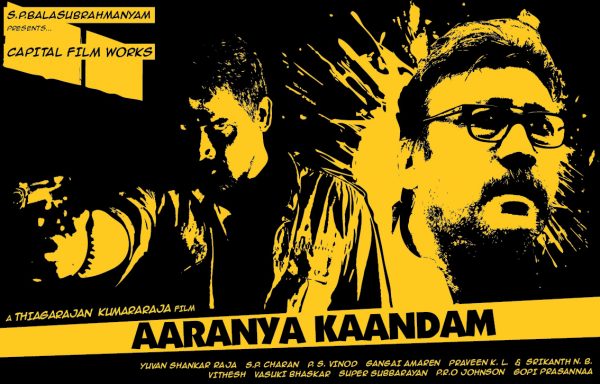
Aaranya-Kaandam-Still
Aaranya Kaandam was also quite memorable for the number of revisions that the edits demanded. “I usually take only 2 months for a film, but it took me 9 months to finish AK.
Sedhuki sedhuki…
…for the scene involving a rooster-fight, Kumar and I were satisfied with the 21st version. Or so I had thought. The next morning, I get a call from my assistant who said Kumar has brought someone along with him. He happened to be a referee for that particular sport. We then learnt that the roosters were never supposed to move out of the circle. That was the rule. And in our footage, the roosters were all over the place. We had to work on that again.”
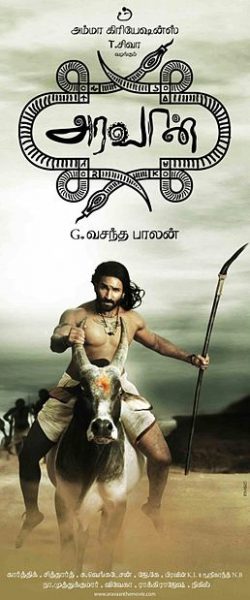
Aravaan1
An editing studio is always a hub of activity, buzzing with discussions, arguments and, the occasional fight. Praveen illustrates, gesturing at his phone. “I just got a call from Karthi about Madras. He said, ‘andha fourth take la kaneer seekaram varum parunga’. I had to tell him that shot was out of focus. We have spoken about 7-8 times regarding this. There’s a healthy back-and-forth between the team. Happens with all projects.” With Mankatha though, Praveen says, Ajith’s presence was quite fleeting in the studio.
He would occasionally pop in, though. To invite the team to sample his biryani.
But otherwise, the actor didn’t even ask to see the rushes. “When he finally watched the first copy though, he hugged me and said ‘thank you’. He doesn’t bother you at all. I was surprised, that was magnanimous of him.”
The length of the movie, though, is always a bone of contention with his directors, Praveen says. “I generally try to restrict a film within 2:10, anything past that, we would be treading a thin line.”
Praveen prefers to be involved in a project right from the scripting stage. “In fact, Saravana Rajan just narrated a script to me. He wanted to add a technical aspect to the script. Most directors trust my instincts.”
“Script-typing” is an integral part of his working process, he says, something he does unfailingly with every movie. “I type out the script first, and tell the directors what the approximate length of the movie is going to be,” he explains, “so that we don’t have to shoot unnecessarily. For Aravaan, we saved close to 10 days of shoot. Which is close to Rs 25 lakhs.”
He also advises his directors on scene and song placements. An editor has to be prescient, he says. “It would be helpful. For instance, if a director is narrating a story where the hero is opening a gate…
…sound effects oda thalaila odum. Even CG and other visual effects are decided beforehand.”
Most directors do know what they want, Praveen explains, but wouldn’t know which equipment would get them the desired effect; that’s when an editor or a cinematographer steps in. “In Jilla, stunt master Selvam wanted to try the 300 trick for fight scenes. It involved placing the camera on two axes on the same rig – one will zoom in and the other will zoom out. So that when we pull back, there is no jerk.”
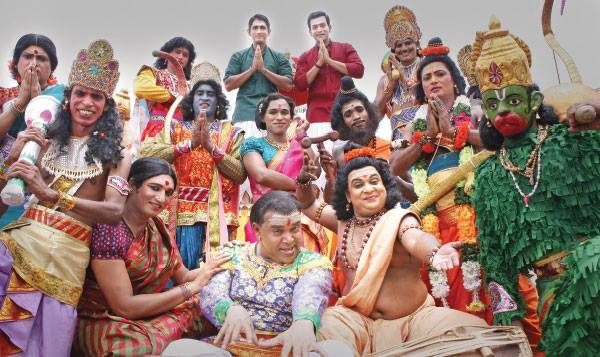
kaaviya-thalaivan-stills-4
Set in the 1930s, Kaaviya Thalaivan follows the lives of a drama troupe; and Praveen enthusiastically lets me in on the details, “When you see Siddharth, Prithviraj and Nasser on the same screen, each one outdoes the other. Prithivraj also has done a 10-minute sequence for the movie. Continuously. It is very tough to remember the dialogue, and he had to emote as well. It’s a poetic film. Vasanthabalan’s movies always have a humane touch. And this one is full of songs, you can expect a track every 10 minutes.”
Comedy is the most difficult genre to edit, Praveen observes. “Sometimes, we would laugh so much at the edit table, but audience madhika kooda maatanga...”
Quite a number of movies have been turned around on the edit table, Praveen says. Ennamo Nadakudhu is a shining example. “It was a three-perspective story. One from the hero’s, one from the heroine’s and one from Thambi Ramiah’s. I completely changed it, and they shot for one more week after that.”
Goa is quite memorable, too. The movie was shot in Malaysia, where the beaches had white sand. “So we had to get pick-up shots of Goa, and there would be an interlude every now and then with a five-second chorus of ‘Goa’. We had to convince the audience that they were indeed seeing Goa,” he grins.
He loves those snazzy cuts in Snatch. So much that he has epitomized them in several movies of his.
Avi: You got a toothbrush? We’re going to London. Do you hear that, Doug? I’m coming to London.
“He would then down a tequila shot, get into a taxi, board a plane, and would be in London. Cut. Cut. Cut. I love that,” he snaps his fingers, “I have employed that in Sigaram Thodu as well. It’s a super transition.”
Twenty years later, with more than 50 movies under his belt, Praveen now has a bunch of eager assistants in his office. “It is possibly what drives me,” he observes, “I want to teach them everything. There’s no hierarchy here. If you are good enough, you can edit a film.”
He highly recommends In the Blink of an Eye by Walter Murch – a sound designer-turned-film editor. “He basically says, you have to cut when the audience blink. I tell my students to read that book – when I conduct workshops.”
His Sunday mornings are reserved for first-time directors, and he usually listens to “at least 5 scripts” every week.
Praveen’s movies are not without the cheeky easter-egg or two. It’s all about strategic dialogue-placement, he grins. “In Vadacurry, when someone says ‘superstar’, my title will flash. And in Naaigal Jaakirathai when you hear the dialogue, ‘avaru romba periya aalunga’, my name will appear on the screen.”
He would like to direct a movie, of course, “I’m toying with this idea – it’s about the Indian education system,” he reveals, “aana kadhai solradhe 10 peru kitta sollanume!”
Recommended
Finally, as we part, I ask about his family. “My wife hates movies,” he laughs, “probably because I watch one even while eating. She’s a PhD student, and has nothing to do with films.”
The KL Praveen Interview is a Silverscreen exclusive.
Mankatha Photo Credit: http://tollywoodstarsprofile.blogspot.com
Aaranya Kaandam Poster via: http://aaranyakaandam.tumblr.com/
Aravaan Poster via: http://en.wikipedia.org/wiki/Aravaan


